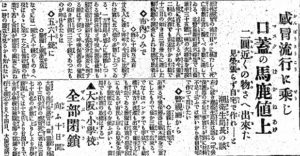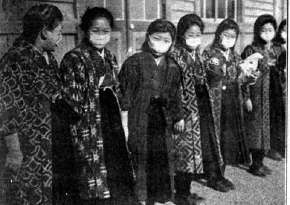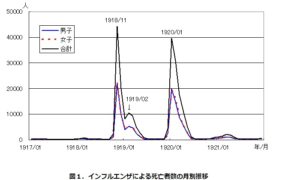This week, we’re talking over Japan’s response to one of the greatest public health crises of the 20th century: the Spanish Flu pandemic of 1918-19. What strategies did the government put in place to try and counter the flu, how was it treated, and what was it like for the doctors on the front lines fighting to save their patients?
Sources
Palmer, Edwina and Geoffrey W. Rice. “A Japanese Physician’s Response to Pandemic Influenza: Ijiro Gomibuchi and the ‘Spanish Flu’ in Yaita-cho, 1918-19.” Bulletin of the History of Medicine 66, No 4 (Winter 1992)
Rice, Geoffrey W. and Edwina Palmer. “Pandemic Influenza in Japan, 1918-19: Mortality Patterns and Official Responses.” Journal of Japanese Studies 19, No 2 (Summer, 1993).
Images




How much power did the Meiji period health ministry have prior to the Spanish Flu? I imagine that it wasn’t a on the same level that the military had but did it have teeth or was it a kind of bureaucratic afterthought? Did they strengthen it afterwards?
The Health Ministry was not one of the major ministries (those tended to be the econonomic ministries, the Home Ministry, and the Army and Navy ministries) — hence the assumption that economic reasons were behind the delay in shutdown, since I can’t think of a military rationale. As to additional power, not really to my knowledge. Honestly, you see the same thing in Minamata where economic considerations are able to pretty instantly override health ones.
There seems to be some kind of tradition of drinking in this kind of circumstances. https://www.nytimes.com/2020/04/19/world/asia/tokyo-japan-coronavirus.html
Certainly a good time for it!